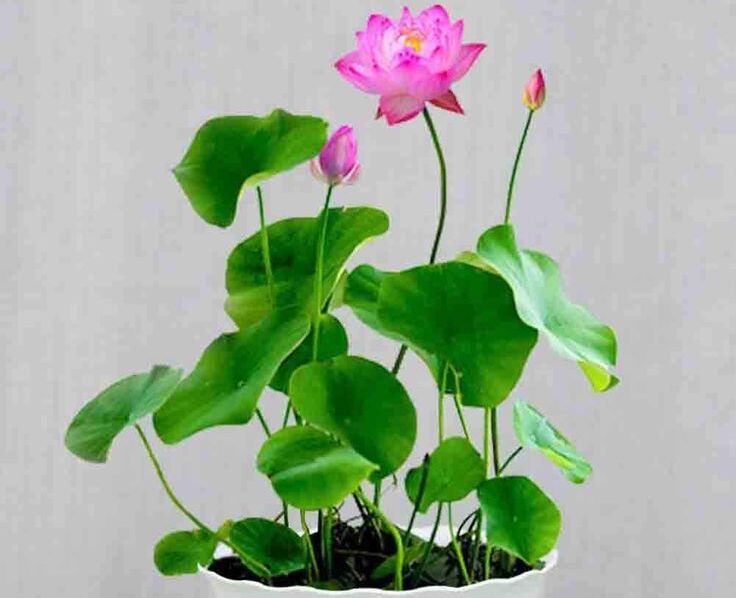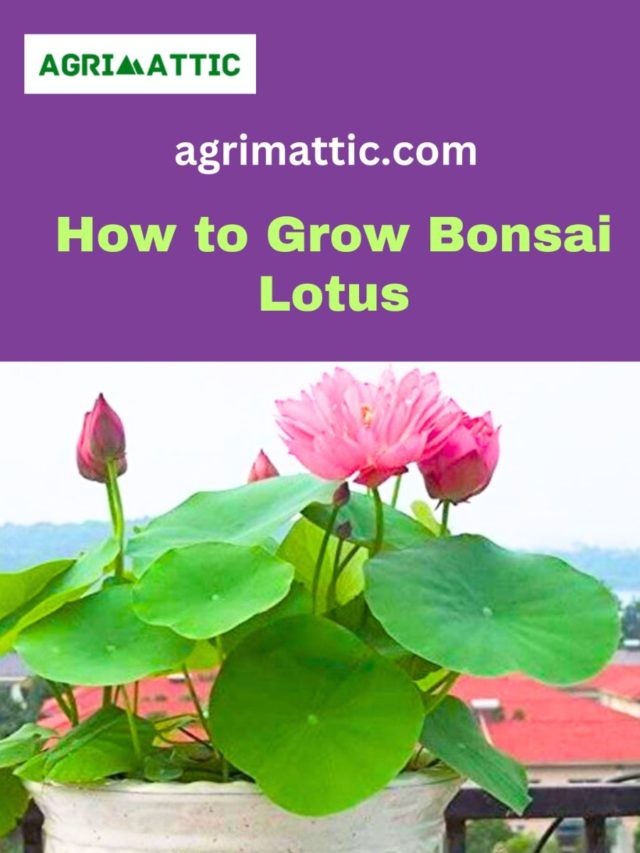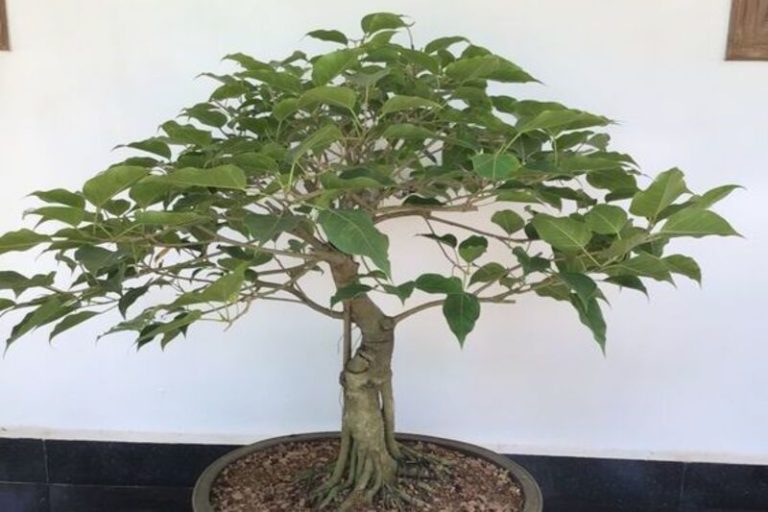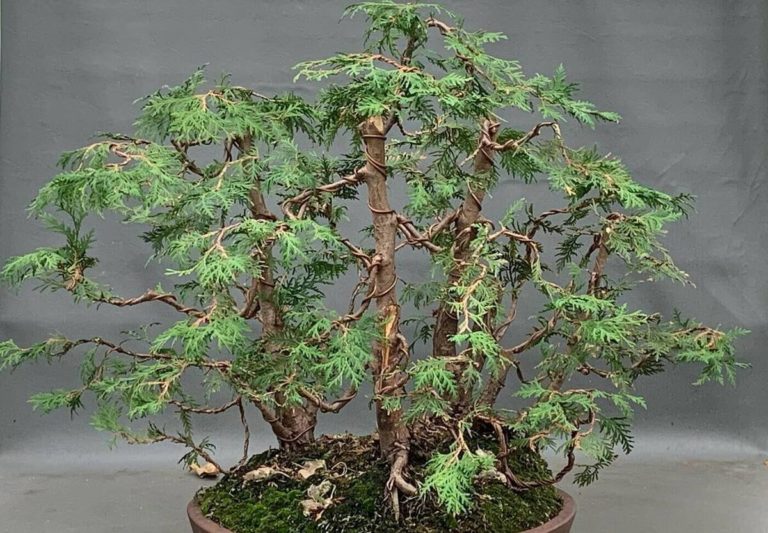Bonsai Lotus: The Art of Creating Miniature Zen Gardens
A bonsai lotus is a lovely little plant cultivated in a small container and sculpted to look like a full-sized lotus plant. It is a popular art form in many countries, and both amateur and expert gardeners appreciate it.
What is Bonsai Lotus?
A bonsai lotus is a small lotus plant that has been grown and styled to seem like a full-sized lotus plant. It is a prominent Japanese art form that is currently practiced all over the world. Bonsai Lotus plants are often planted in tiny pots and require meticulous pruning and shaping to attain the desired shape. They are popular in decorations and presentations because of their beauty and meaning.
Types of Bonsai Lotus
There are several types of lotus plants that can be grown as bonsai, including:
Nelumbo nucifera: Also known as the Indian or Sacred Lotus, this is the most commonly grown lotus plant and is known for its large, fragrant flowers.
Nelumbo lutea: Native to North America and prized for its enormous, yellow flowers, this plant is also known as the American Lotus.
Nelumbo ‘Mrs. Perry D. Slocum’: This hybrid lotus plant is distinguished by its pink flowers and ability to blossom later in the season.
Nelumbo ‘Momo Botan’: This is a Japanese hybrid lotus plant that is known for its large, pink flowers.
Nelumbo ‘Chawan Basu’: This is a Japanese lotus plant that is known for its large, double-petaled flowers that resemble a bowl.
Each variety of bonsai lotus possesses distinctive qualities and is revered for its attractiveness and symbolism. Consider your climate, growing conditions, and personal preferences when selecting the type of bonsai lotus to cultivate.
Bonsai Lotus and Its Symbolism
In numerous cultures, the Bonsai Lotus is not only admired for its attractiveness, but also for its symbolic significance. The lotus flower is regarded as a sacred symbol of purity, enlightenment, and regeneration in numerous Asian cultures.
The lotus blossom is a significant symbol in Buddhism, representing the path to enlightenment. The plant’s growth in the murky waters represents the path from ignorance to enlightenment. The flower symbolizes the realization of one’s complete potential and the attainment of enlightenment.
In Hinduism, the lotus flower is associated with various deities and regarded as a symbol of spiritual development and purity. It is frequently depicted in religious art and is thought to bring fortune and prosperity.
The lotus flower is loved for more than just its spiritual meaning. It is also beautiful and strong. It is a plant that can live in different environments and is known for being able to bloom even in muddy or dirty water.
Growing a bonsai lotus can be a way to connect with this meaning and bring its good energy and symbolism into your home or yard. It can be a sign of the path to wisdom and the possibility of growth and change.

Characteristics of Bonsai Lotus
Lotus bonsai have distinctive characteristics that distinguish them from other bonsai. Here are several of the most distinguishing characteristics of bonsai lotus:
- Size: Most bonsai lotus plants are small, with heights between 30 and 60 cm. Because of this, they are great for growing in small pots and inside.
- Flowers: The lotus plant’s big, colorful blossoms are one of its most distinguishing characteristics. Depending on the kind, bonsai lotus plants can produce blossoms ranging in size from 10cm to 20cm in diameter.
- Leaves: A lotus plant’s leaves are usually big and round, with a width of about 30 cm. They are often used in traditional medicine and are said to have many healing qualities.
- Roots: A lotus plant has long, tuberous roots that can grow up to 1 meter long. In order to keep the roots of bonsai lotus plants small and tight, they are often grown in tiny pots or containers.
- Symbolism: People like bonsai lotus plants because they are symbolic of mental growth and understanding. People often use them to decorate and show off, and they are often given as gifts on special events.
Overall, bonsai lotus plants have a distinctive beauty and symbolism that make them a popular option among bonsai enthusiasts and plant aficionados alike. They may grow and provide joy and optimism to any indoor or outdoor area if given sufficient care and attention.
How to Grow Bonsai Lotus?
Growing bonsai lotus takes time, expertise, and attention, but it is a rewarding pastime that may provide joy and beauty to your home or yard. The following are the steps for growing bonsai lotus:
Choose the right type of lotus plant: Choose a lotus variety that does well in your area’s weather and soil conditions among the many available for bonsai cultivation.
Purchase a young lotus plant: You can purchase a young lotus plant from a nursery or garden center. Look for a healthy plant with green leaves and a well-developed root system.
Choose a suitable container: Bonsai lotus plants should be grown in a shallow container that allows the roots to spread out and stay compact. Choose a container that is slightly larger than the root ball of your lotus plant.
Use the right soil: Bonsai lotus plants need a special mixture of dirt that is full of nutrients and drains well. You can buy a bonsai soil mix or make your own by mixing peat moss, sand, and clay in equal parts.
Plant the lotus: Carefully plant the lotus in the container, making sure that the roots are spread out and covered with soil. Water the plant thoroughly and place it in a sunny location.
Prune and shape the plant: To keep their shape, bonsai lotus plants need to be pruned and shaped regularly. Use sharp pruning tools to cut off any dead or broken leaves or branches and shape the plant as you like.
Water and fertilize regularly: Bonsai lotus plants need to be watered often, especially when it’s hot outside. They also do better when appropriate fertilizer is used on them regularly.
By following these methods and providing adequate care and attention, you may develop a beautiful and healthy bonsai lotus plant that will offer joy and beauty to your home or yard.
Benefit of Bonsai Lotus
Bonsai Lotus plants not only add beauty to your home or garden, but they also offer several benefits. Here are some of the main benefits of growing bonsai lotus:
- Stress reduction: Interacting with plants has been demonstrated in studies to help alleviate stress and increase general well-being. Caring for a bonsai lotus plant may be a soothing and therapeutic pastime that promotes relaxation and stress reduction.
- Air purification: Plants naturally clean the air and help get rid of dangerous toxins and pollutants. Especially bonsai lotus plants have been shown to be good at cleaning the air and clearing pollutants.
- Symbolism: Lotus bonsai plants are prized for their symbolism and are frequently connected with spiritual growth and enlightenment. They might act as a reminder of the road toward self-improvement and personal progress.
- Aesthetics: Bonsai lotus plants look nice and can improve the look of any room or space, indoors or out. They can be used as decorations in homes, companies, or public places.
- Educational value: Growing a bonsai lotus plant may be a rewarding learning experience, teaching great lessons in plant care, patience, and mindfulness. Adults and children alike may enjoy this enjoyable and informative activity.
Overall, growing a bonsai lotus plant can offer a range of benefits beyond just aesthetics. It can promote well-being, improve air quality, and serve as a reminder of personal growth and transformation.
Styling and Design of Bonsai Lotus
The styling and design of bonsai lotus can vary depending on personal preference and the desired look. Here are some common styles and design techniques used in bonsai lotus:
Formal upright style: In this style, the trunk of the bonsai lotus grows vertically with evenly spaced branches. The leaves are arranged in a symmetrical pattern, giving the tree a formal and structured appearance.
Informal upright style: This style is similar to the formal upright style but with a more natural, less structured appearance. The trunk may have curves and bends, and the branches are not evenly spaced.
Slanting style: In this style, the bonsai lotus’s trunk grows at an angle, giving the tree a dramatic and lively look.
Cascade style: In this style, the base of the bonsai lotus grows downward, making it look like a waterfall. The trees are set up in a way that makes them look like they are falling.
Group planting style: In this style, multiple bonsai lotus plants are planted together in a container, creating a miniature landscape. The plants are carefully arranged to create a harmonious and natural look.
Design techniques used in bonsai lotus include pruning, wiring, and shaping. Pruning involves removing unwanted branches and leaves to shape the tree and maintain its desired form.
Wiring involves wrapping wire around the branches and trunk to guide their growth and create desired shapes. Shaping involves manipulating the branches and trunk through bending and trying to achieve the desired look.
Overall, making and designing a bonsai lotus can be a fun and creative process that lets you make a beautiful, one-of-a-kind tree that shows your own style and tastes.

How to Care and Maintain Bonsai Lotus?
Caring for and keeping a bonsai lotus plant demands meticulous attention to detail and frequent maintenance. Here are some recommendations for caring for and maintaining your bonsai lotus:
- Watering: Bonsai lotus plants require regular watering to keep the soil moist but not waterlogged. Watering frequency will depend on the climate and time of year. Generally, they should be watered when the top layer of soil feels dry to the touch.
- Fertilizing: To promote healthy development, bonsai lotus plants should be fertilized on a regular basis. During the growth season, use a balanced fertilizer, and minimize fertilizer during the dormant season.
- Pruning: Regular pruning is necessary to maintain the shape and size of the bonsai lotus plant. Remove any dead, damaged, or diseased branches, and trim back overgrown foliage.
- Repotting: Bonsai lotus plants should be repotted every 1-2 years to ensure healthy growth. Repotting involves carefully removing the plant from its current container, trimming the roots, and placing it in fresh soil.
- Sunlight: Bonsai lotus plants need plenty of sunlight to grow and thrive. They should be placed in a bright, sunny location but protected from intense, direct sunlight.
- Humidity: Bonsai lotus plants prefer high humidity levels, so it may be necessary to mist the leaves regularly or place a tray of water near the plant to increase moisture in the air.
- Winter care: During the winter months, bonsai lotus plants may require extra care to protect them from cold temperatures. Move the plant to a warmer location and reduce watering frequency to prevent the soil from freezing.
Overall, caring for and maintaining a bonsai lotus plant requires consistent attention and care. By following these tips, you can help ensure that your bonsai lotus remains healthy and vibrant for years to come.
Bonsai Lotus care sheet
| Aspect | Care Tips |
| Watering | When the top layer of soil seems dry, water it. Maintain a moist but not soggy soil. |
| Fertilizing | Use a balanced fertilizer during the growing season. Reduce fertilizer during the dormant season. |
| Pruning | Regularly prune dead, damaged, or diseased branches. Trim back overgrown foliage to maintain the desired shape and size. |
| Repotting | Repot every 1-2 years to ensure healthy growth. Carefully remove the plant from its container, trim the roots, and place it in fresh soil. |
| Sunlight | Place in a bright, sunny location but protect from intense, direct sunlight. |
| Winter care | Move to a warmer location during the winter months. Reduce watering frequency to prevent the soil from freezing. |
| Additional tip | Bonsai lotus plants prefer high humidity levels, so misting the leaves regularly or placing a tray of water nearby can help increase moisture in the air. |
Overall, caring for bonsai lotus requires attention to detail and regular upkeep. By following these care tips, you can help ensure that your bonsai lotus remains healthy and vibrant.
Conclusion:
Anyone who likes gardening and plants can enjoy growing and taking care of a bonsai lotus plant. By using these tips, you can make a beautiful tiny lotus plant and enjoy the benefits of this unique art form. Remember to love and care for your bonsai lotus plant, and it will give you years of beauty and grace in return.
FAQ:
Q: What is Bonsai Lotus?
A: Bonsai Lotus is a miniature version of the lotus plant that is grown in shallow containers as a decorative element.
Q: Can I grow Bonsai Lotus indoors?
A: Yes, Bonsai Lotus can be grown indoors but they require plenty of sunlight and humidity.
Q: How often should I water my Bonsai Lotus?
A: Bonsai Lotus should be watered when the top layer of soil feels dry. The frequency of watering will depend on the climate and time of year.
Q: How often should I fertilize my Bonsai Lotus?
A: Bonsai Lotus should be fertilized regularly during the growing season with a balanced fertilizer. Reduce fertilizer during the dormant season.
Q: When should I prune my Bonsai Lotus?
A: Regular pruning is necessary to maintain the shape and size of the Bonsai Lotus plant. Prune dead, damaged, or diseased branches and trim back overgrown foliage.
Q: How often should I repot my Bonsai Lotus?
A: Bonsai Lotus should be repotted every 1-2 years to ensure healthy growth. Carefully remove the plant from its container, trim the roots, and place it in fresh soil.
Q: Does Bonsai Lotus require special care during the winter months?
A: Yes, during the winter months, Bonsai Lotus may require extra care to protect them from cold temperatures. Move the plant to a warmer location and reduce watering frequency to prevent the soil from freezing.
Q: What are the benefits of having a Bonsai Lotus?
A: Bonsai Lotus plants are not only beautiful but also have a symbolic significance. They represent purity, enlightenment, and self-regeneration.
Q: Can I propagate Bonsai Lotus?
A: Yes, Bonsai Lotus can be propagated through division, cuttings, or seeds.
Q: Where can I buy Bonsai Lotus?
A: You can buy Bonsai Lotus from a local nursery, online plant stores, or specialty bonsai shops.
Also Read:








